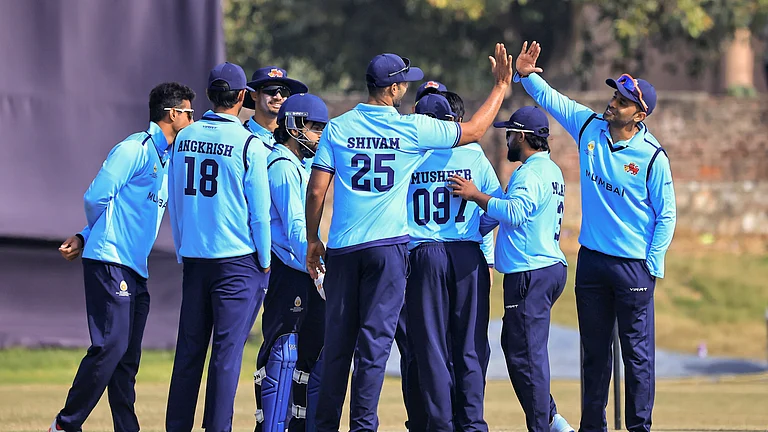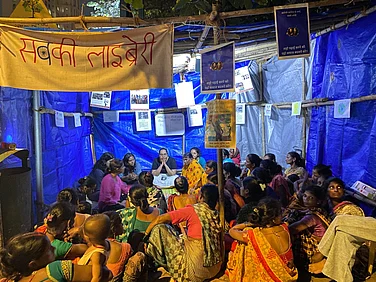Some time back, I had a conversation with a poet who said that a poem is an appendage of her body, whereas I had always thought that a poem, once born from the poet, would have a life of its own, unlike an appendage which draws nutrition from where it emanates. For me, a poem upon birth becomes detached from the poet and the poet can at best have a parental attachment to it. But for my fellow poet the poems were parts of her body, every new one modifying her, reshaping her, and giving her a new dimension.
TS Eliot in his famous essay Tradition and Individual Talent had written about tradition getting modified with the addition of every new work. Tradition in literature is nothing but a body of literary works which is ever-changing but at the same time maintains its identity. The actual human body is also the same. So when I am saying that a poem once produced becomes a part of the poet’s body itself, both changing but still maintaining the same identity, they form an analogy. And if we consider the woman’s body as a site of “écriture”, then the female poet by producing a poem is writing it into her body. No doubt my fellow poet is a female, Sufia Khatoon, and her most recent book is Ger-mi-na-tion (Red River 2022).
Sufia Khatoon identifies herself with the pomegranate and her body returns to the pomegranate tree and her mouth lip-synches “the scarlet sunsets on my body” (The Pomegranate Tree XVI). This type of extreme physical identification with a part of the natural world reminds us of how Shelley identifies himself with the West Wind or Keats with the nightingale. Also, this preoccupation with the body, where she can peel the “flesh of love” or feel her body as a “tombstone of desires”, points to the fact that the body is not just the scene of writing but can also write back. Sufia is one of those rare poets who can convincingly do so. Her The Pomegranate Tree series of poems establishes her as a significant voice in the area of English poetry being written by Indians. But she is not the only one.

In Shamayita Sen, we find one more such voice. Her latest collection My Body is Not a Vessel (Hawakal 2022) has a searing quality in the way she unfolds truths by using the body both literally and metaphorically. In the poem How to Insert a Cup, she writes:
Feel your way in:
like your fingers belong to your self,
like they are friends to the path,
like you own your body.
In her poem Dead Grandfather(s) in NRS, she writes, “I imagine you inhabiting/one of the lonely naked stiffened/bodies laid half-open in a chamber.” It is this juxtaposition of the abstract identity of the grandfather with the tangible entity of the body it inhabited, which death has separated, that harks back to the relationship of the poem to the tradition. In her standout poem In this Poem there are No Deaths, she eliminates death altogether and thereby makes the inhabitation permanent.

The idea of inhabiting is very deeply explored by another poet whom I shall call, at the cost of sounding trite, the star of contemporary Indian English poetry, Basudhara Roy. In her book titled Inhabiting (Authorspress 2022), she displays uncanny ability to perceive “voices’ bodies or shadows’ selves” (Some Days). In her poem Venusian, she shows how she can turn a painful bodily phenomenon of periods into the beauty of poetry.
It is one of those days of the month
I am not well…
In the karst of my abdomen,
slumbering rivers pandiculate,
till every crimson uterine tale
is told…
For her, reading a poem is very much a bodily act —“masticate upon their leafy metaphors” (Loving a Poet) or turn “dyspeptic with syllables unchewed” (Delete).

If the idea is to chew and masticate, then there can be no better poet than the young Nikita Parik. To call her a rising star will be a sort of self-mockery seeing the command she has over the use of language. Her latest book, My City is a Murder of Crows (Hawakal 2022), is divided into four sections and the second section is titled This Mouth is an Ocean. Her own struggles with braces for her teeth led her to write in Confinement:
The dentist injects my gums
with liquid lies…
My tongue is confused about
any movement in this barb-wired
city...
My mouth is
Kashmir, is Palestine, is a witch,
a homosexual. My voice is waiting
to oust the fictive.

In Jean Paul Sartre’s novel Nausea, the protagonist Roquentin could see his hand as an appendage of his body with separate existence. Nikita can sense “I am tired but this mass of body, strangely my own, won’t let me sleep” (Static) or feel that an “illness has taken hostage of this body and upturned the hourglass of my being” (Reverb). It’s a rare ability, an ability that is also possessed by Jagari Mukherjee.
Among the five poets in discussion, the latest book is that of Jagari Mukherjee's Exit Noire (BookWryter 2023). She has the magic to portray the pain as beautifully as it can be portrayed. In Syllables, she writes enchantingly:
a snapdragon perches
on the embroidery of wounds
soon, I’ll press dried flowers
between pages, where
a poet composes syllables
of soft yearnings
In her poem Lavender, metamorphosis takes place:
Sometimes, I turn
myself and you
into yellow-green birds
on a lavender wisteria vine.
In Schizoanalysis, she writes:
You scallop me to meat strips:
Schizoanalysis — you call it.
My skin turns prismatic, letting in the sun —
a yolk-yellow body without organs.
This poem is about the mind but mediated through the body. The psychosomatic aspect of poetry is nowhere more apparent perhaps. In fact, in the poem When Your Body is a Palimpsest, she acknowledges “there’s no difference between/my lips and ink”.

What this analysis of five poets establishes is that the female body which is seen as a handicap in a patriarchal society destabilises the hierarchy when it comes to the domain of poetry. The literal body of a female poet forms a tradition whose legacy outweighs the tradition formed by the body of works of the male poets. In the field of contemporary poets, these poets walk with élan.























